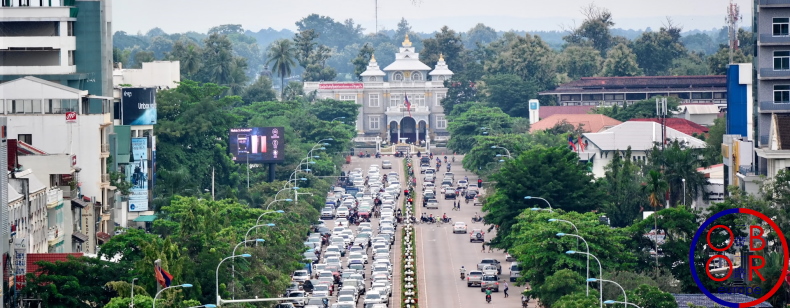by Dr. Sebastien Goulard

On the 16th of October, the first Laos-China Railway passenger train departed from Kunming, headed for Vientiane. The construction of this new line, a major Belt and Road Initiative (BRI) project, took five years to complete. Several tests will be conducted on this new line before its inauguration on the 2nd of December, Laos’s National Day.
It will take less than 10 hours to travel from Kunming to Vientiane by train. This new 1,022-km line will also be opened to freight trains, which would help Laotian companies to export their products at a lower cost.
To construct this line, several bridges and tunnels needed to be built, making this project quite expensive, with a total budget of $6 billion, which will be partly financed through a loan contracted by the joint venture of the Laos-China Railway Company.
This is one of the most important projects conducted so far by Laos. For Vientiane, this new railway makes the country more attractive to Chinese tourists and will also create new trade opportunities for local companies. The Laos-China railway will also create a better connection between the northern Laos region and the capital, as well as with China.
Challenges Ahead
Now that the line is operational, China and Laos will face several challenges, which they will need to address together. One of these concerns tourism. This line will boost tourism in developing Laos, which is likely to be good news for this Southeast Asia nation country, which suffers from poverty. But this sudden influx of visitors will need to be managed in order to avoid weakening the entire Laos economy. For instance, real estate prices must be regulated to prevent the formation of “bubbles” caused by tourism development, and waste management facilities will need to be modernized. Laos will also need to become more than just a Chinese tourist destination (which could be fragilized by future pandemics); rather, tourism should be used to diversify its economy.
Vientiane is not to be the final destination of this new railway. China plans to connect Kunming to Singapore, going through Thailand, Malaysia and maybe Cambodia. Some of these countries have been a little wary of China’s BRI and have reluctantly opened their railway construction projects to Chinese companies. There have been some concerns about the possible financial risks posed by the construction of this railway network; they will thus pay close attention to the development of this initiative in Laos. To convince these countries to connect their rail network to China, Beijing must be understanding and demonstrate flexibility regarding the implementation of development projects in Laos.
Share the post "The First Passenger Train between Kunming and Vientiane"
